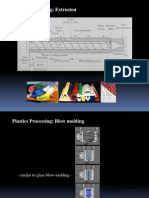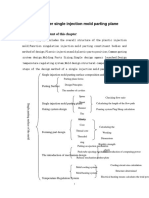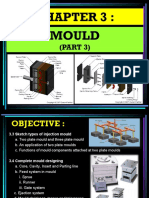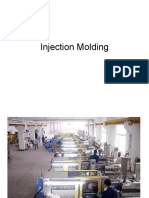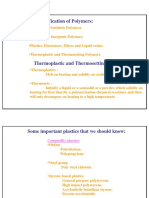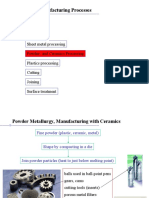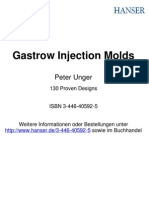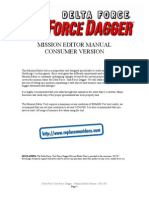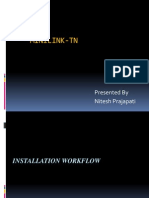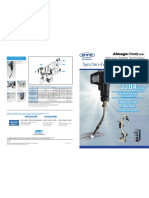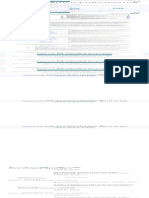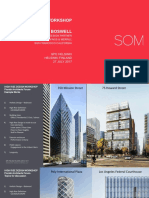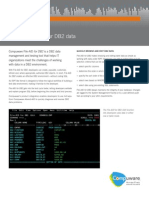0% found this document useful (0 votes)
40 views24 pagesTool Design & Applications Injection Molding
The document discusses tool design and applications for plastic molds. It covers topics like parting lines, types of parting surfaces, principles of designing parting surfaces, determining the number of mold cavities, layout of mold cavities, melt directing phases including sprues, runners, gates, cooling the mold, and venting the mold.
Uploaded by
pvmrtpvmrtCopyright
© © All Rights Reserved
We take content rights seriously. If you suspect this is your content, claim it here.
Available Formats
Download as PDF, TXT or read online on Scribd
0% found this document useful (0 votes)
40 views24 pagesTool Design & Applications Injection Molding
The document discusses tool design and applications for plastic molds. It covers topics like parting lines, types of parting surfaces, principles of designing parting surfaces, determining the number of mold cavities, layout of mold cavities, melt directing phases including sprues, runners, gates, cooling the mold, and venting the mold.
Uploaded by
pvmrtpvmrtCopyright
© © All Rights Reserved
We take content rights seriously. If you suspect this is your content, claim it here.
Available Formats
Download as PDF, TXT or read online on Scribd
/ 24











